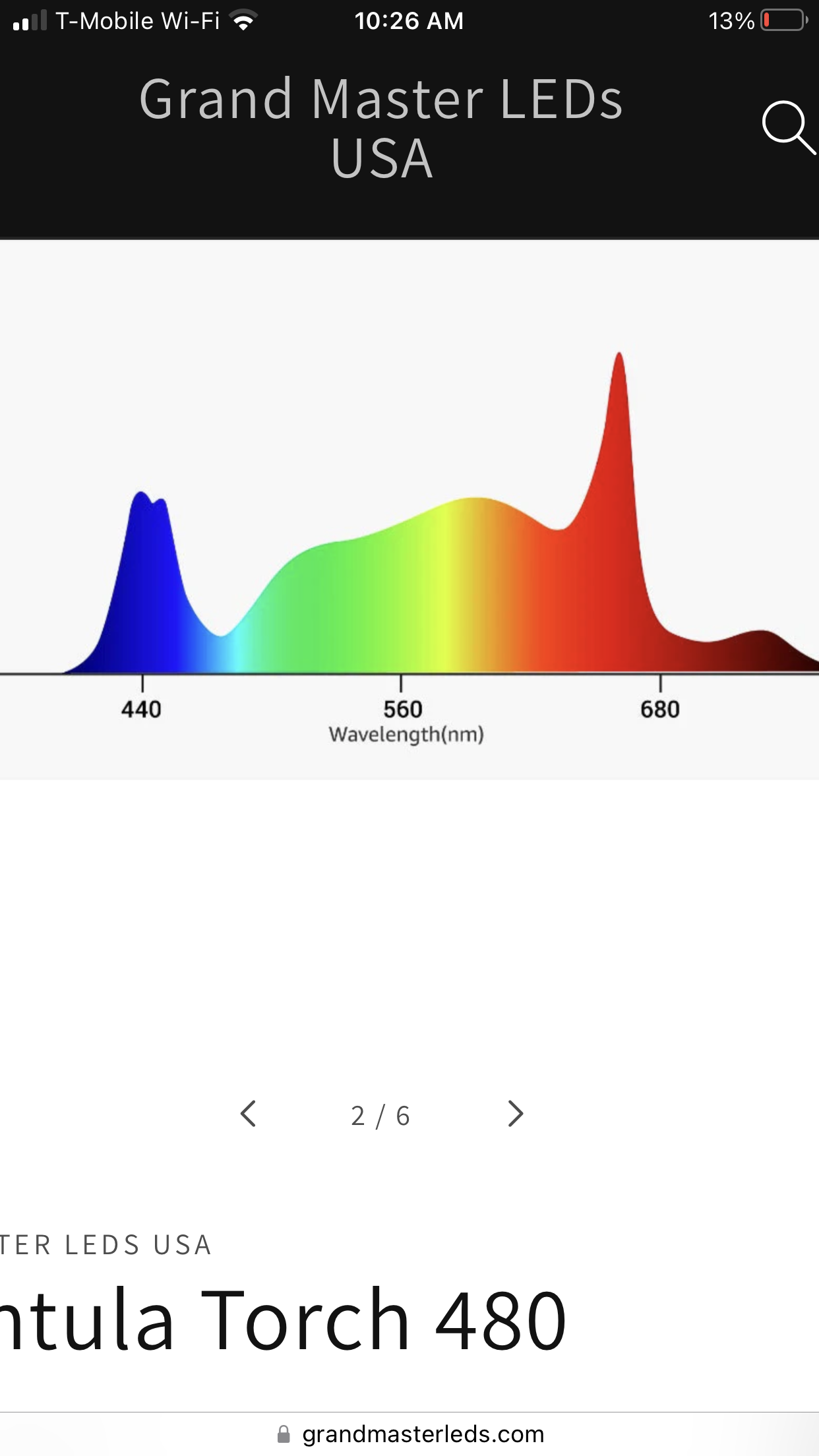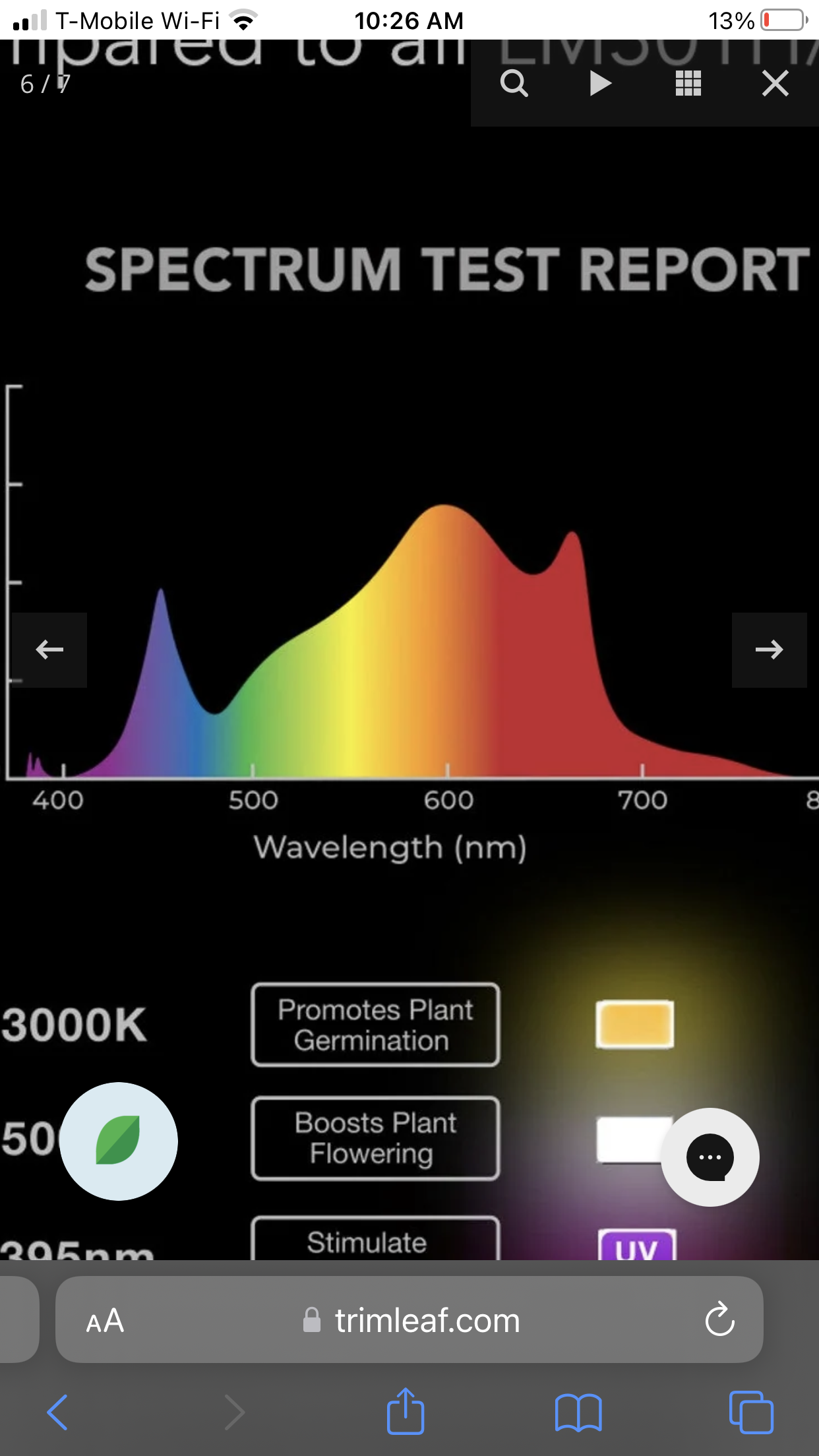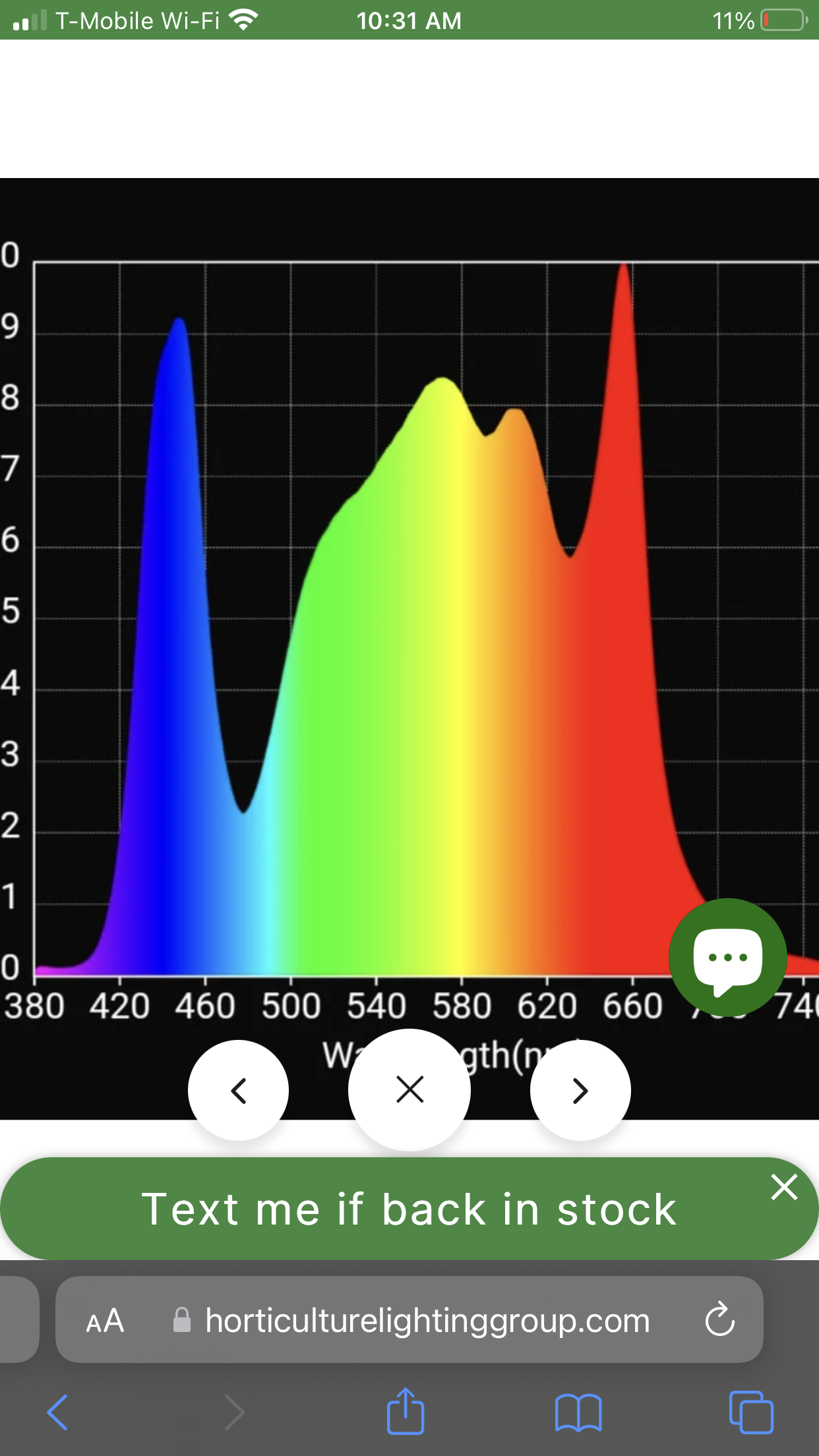Home › Forums › Grow Community – Ask Questions & Share Your Grow! › Which of these based on spectrum?
- This topic has 14 replies, 2 voices, and was last updated 1 year, 8 months ago by
rama777.
-
AuthorPosts
-
January 11, 2024 at 3:30 pm #3363
rama777
Participant Yo! I’m gonna retire the HPS after his at the first grow. Wasted investment, oh well but lessons have to be learned!
Yo! I’m gonna retire the HPS after his at the first grow. Wasted investment, oh well but lessons have to be learned!I’m narrowed down to 3 lights. Do one of these stand out as being more optimal in terms of spectrum to you?
This will be just for flowering by the way.January 11, 2024 at 3:30 pm #3364rama777
Participant January 11, 2024 at 3:30 pm #3365
January 11, 2024 at 3:30 pm #3365rama777
Participant January 11, 2024 at 3:33 pm #3366
January 11, 2024 at 3:33 pm #3366rama777
ParticipantWell there is one more actually, but it’s not a bar style light so I’m a bit on the fence about it since it would require more distance from the canopy. That being said, it’s the most overpowered light for the space so it may not have to be THAT much higher with the appropriate dimming.
 January 12, 2024 at 7:06 pm #3383
January 12, 2024 at 7:06 pm #3383CamZ
ModeratorI like the last one. Number 1 has too much far red. 3 looks to have a similar amount, plus I can see a UV spike, which has been identified as bad/wasteful for leds.
2 looks like a very red heavy spectrum. Not terrible, but not my favorite.
4 looks the most balanced and complete. More red than blue and a decent amount of green. Should provide dense growth and have good penetration.
January 12, 2024 at 8:48 pm #3386rama777
ParticipantCan you say a bit more about why you think the first one has too much far red? What would be the cons of that?
January 12, 2024 at 9:11 pm #3388CamZ
ModeratorFar red produces a plant response that makes the plant think it is under a canopy and being blocked from sunlight. It causes the plant to produce hormones that make it stretch to reach the light. You get long internodal distance and stretchy plants. I build my own lights and learned this the hard way. Beyond far red is ir, which we feel only as heat. Heat+leds=shorter life and wasted energy. The heat you feel from a light fixture is electrical inefficiency, which= your $.
The phosphor coating on blue leds makes them produce white light and you get a very good balance by mixing something like 3000 Kelvin and 5000 Kelvin leds and then adding 660nm reds because they are very photosynthetically and somewhat electrically efficient. Phosphor coated blues already produce enough far red inherently.
January 12, 2024 at 9:23 pm #3389CamZ
ModeratorThe photosynthetic “weight” of red photons is high, but they aren’t as electrically efficient as blue leds. I believe it’s something like 3 to 1 red to blue, in terms of photon production per watt anyway.
January 12, 2024 at 9:59 pm #3390rama777
Participant<p style=”text-align: left;”>Thanks for the info! When you built your lights with far red, did you have more in the spectrum than that first graph? The reason I ask is because in all other ways it’s the most attractive option. Efficiency is awesome, but going from HPS!? I’ll be happy with any LED!
</p>
The main thing that concerned me was the far red, but I imagine that it only causes stretch when it gets to a certain percentage of the overall spectrum. I guess I need to research and see if I can uncover what that percentage is..The other consideration is that I can get the light with far red bump closer to the canopy by 8” versus the last one, which you thought looked the best. So that may mitigate the negative effects of the additional stretch. But, for sure I’d love to find some research about how much more a plant actually stretches based on how much percentage of far red is added into the spectrum..
January 12, 2024 at 11:45 pm #3393CamZ
ModeratorIt is very difficult to ascertain the percentage of red based on a spectral reading. I had around 17-18% including the percentage in my white diodes. Yeah, switching from hps is good for the wallet.
Percentage far red is important, but it coincides with the amount of blue photons. Blue photons cause plants to stay more compact. It’s more of a balancing game. The sun has around 20% far red, but also has a very high par intensity and a ton of blue photons during the growing season.
Light coverage is more important than spectral makeup to me, to a degree. None of them are bad, 4 was just my prefrence based solely on spectrum. If 1 has a better footprint then pick that one. The current science just says far red is a waste of money. Adding extra promotes the opposite of what growers want indoors.
Check these videos out if you want to learn more. Keep in mind the last video was based on preliminary research. More expressive of the Emmerson effect than the usefulness of far red. Dr. Bugbee has said himself that it is more efficient to replace those diodes with white diodes.
January 13, 2024 at 12:19 am #3398CamZ
ModeratorLet me just throw in another light for fun. Idk if you are familiar with GreenGoblin510 but these are the lights he uses. They are very good, very large, and very affordable. If you wait for a sale you can get one for like 450. I think they were 386 USD or something stupid low during Black Friday. They make a fold 6 too, but it says they are sold out rn. I don’t even need lights but almost bought one on black Friday because that deal was so unbelievable.
And just because it’s his website and the deal is stellar right now here is Chris’ recommendation.
VIPARSPECTRA 2024 KS5000 LED Grow Light 500W with Samsung LM301H Osram Diodes 6 Bars Grow Light, 4x4ft Coverage Full Spectrum Uniform PPFD Dimmable Daisy Chain Commercial Grow Lamp for Indoor Plants https://a.co/d/exD4xUs
January 13, 2024 at 5:58 pm #3402rama777
ParticipantThanks for the links, I watched them all 😉
All those lights you mentioned would be options in a 4×4 but I have a 3×3, for which there are way fewer options actually.
I am leaning towards the one with the bump in far red, first picture. Not because I want far red but because it’s a bar style light. The last spectrum comes from a killer light, but is really only appropriate for gorilla tents with height extension after researching it more.
Here’s the light. It would be an incredibly tight fit in the tent but it will fit ultimately. Detachable driver with continuous know would make it so that I can adjust par with the dimmer more than having to adjust height on the beast of a light.
January 13, 2024 at 7:44 pm #3404CamZ
ModeratorVIPARSPECTRA 2024 KS3000 LED Grow Light 320W with Samsung LM301H Osram Diodes 4 Bars Grow Light, 3x3ft Coverage Full Spectrum Uniform PPFD Dimmable Daisy Chain Growing Lamp for Indoor Plants Veg/Bloom https://a.co/d/h24iIn7
Here is the 3×3 version of the Vipar bar light if you are interested. It’s like 340 currently and they are running a coupon deal for like 40 off on Amazon right now. It’s 320w vs 480w, but you’d have to really have things dialed in to be pushing 480w in a 3×3.
The Tarantula is a great light. I have seen a couple reviews on it. Still think the far red is undesirable, but that’s just my opinion. Seems a little overkill, but it’s always nice to have the option to put it in a 4×4 later if you want to, though that puts other lights back in the running. Either way, hmu if you want any more opinions. Good luck with your decision.
January 13, 2024 at 7:50 pm #3405rama777
ParticipantThanks man! Yeah it’s definitely overkill, but in no way do I plan to push it to 100% ever. But yeah precisely, it gives me the option of something to put in a 4×4 someday. Also the Vivarspectra spectrum looks kind of whacky, though I know it really excels at even coverage in a 3×3.
Thanks again for sharing knowledge 🙂
January 13, 2024 at 7:52 pm #3406rama777
ParticipantOne other option that I found is a spider farmer SE5000 though, which seems to have a pretty pretty perfect spectrum.
-
AuthorPosts
- You must be logged in to reply to this topic.
